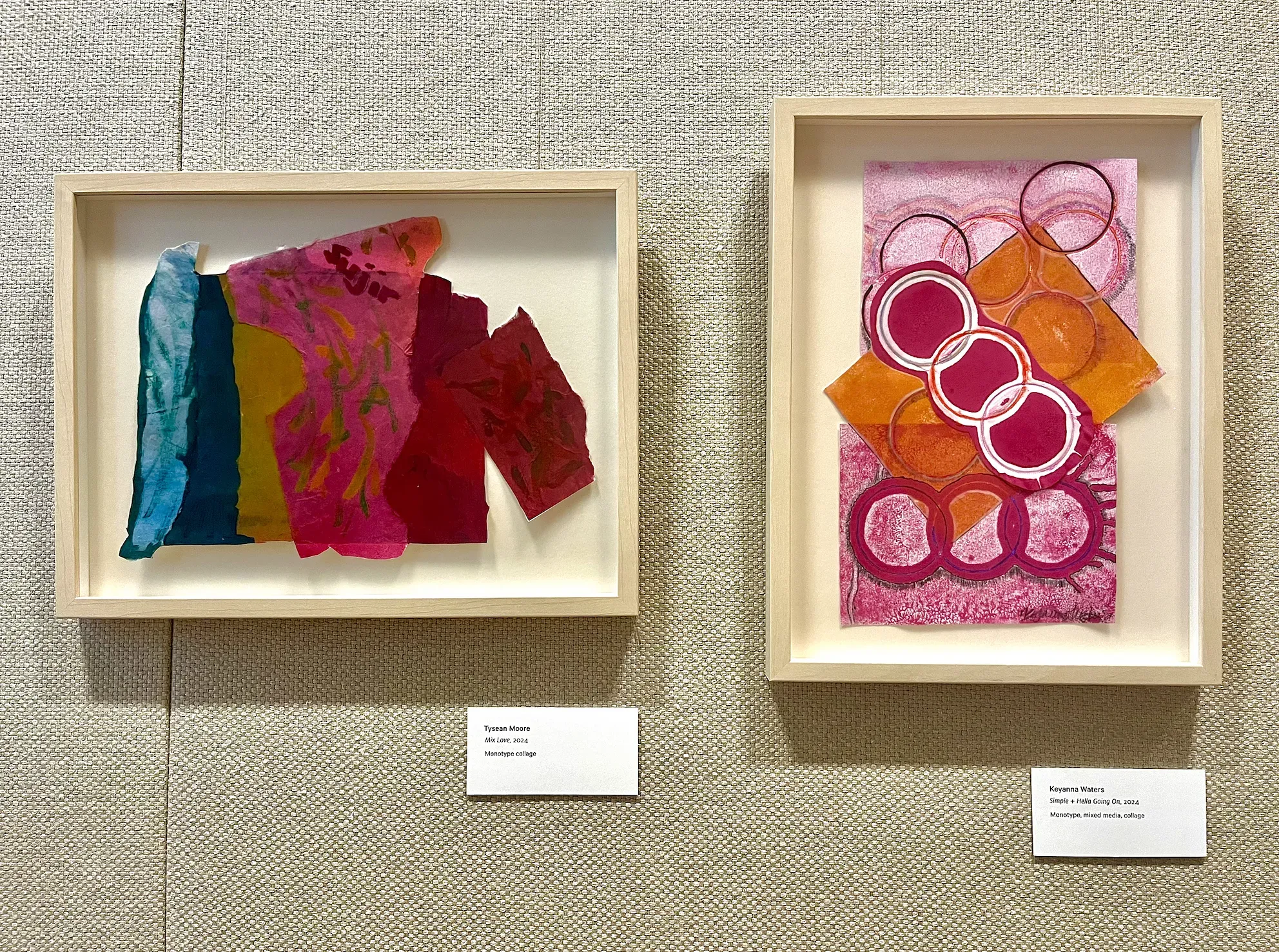Visions
The Barnes Foundation
2025 Benjamin Franklin Pkwy
Philadelphia
Aug. 1, 2024
Meandering through a maze of Matisse — meaning through a wave of 20th century women generously sprawled across colorful canvases in naked freedom — I was surprised to stumble upon one artwork serving as a contemporary comparison: Interlinking circles resembling handcuffs, printed in hot pink ink.
I saw those visual perspectives this week at the Barnes Foundation, an educational center with an expansive collection of diverse art, including a wide array of post-impressionist Matisse, Van Gogh and Picasso. This summer, the Barnes is also hosting an exhibit of artworks made by incarcerated and otherwise justice-impacted individuals, titled “Visions.”
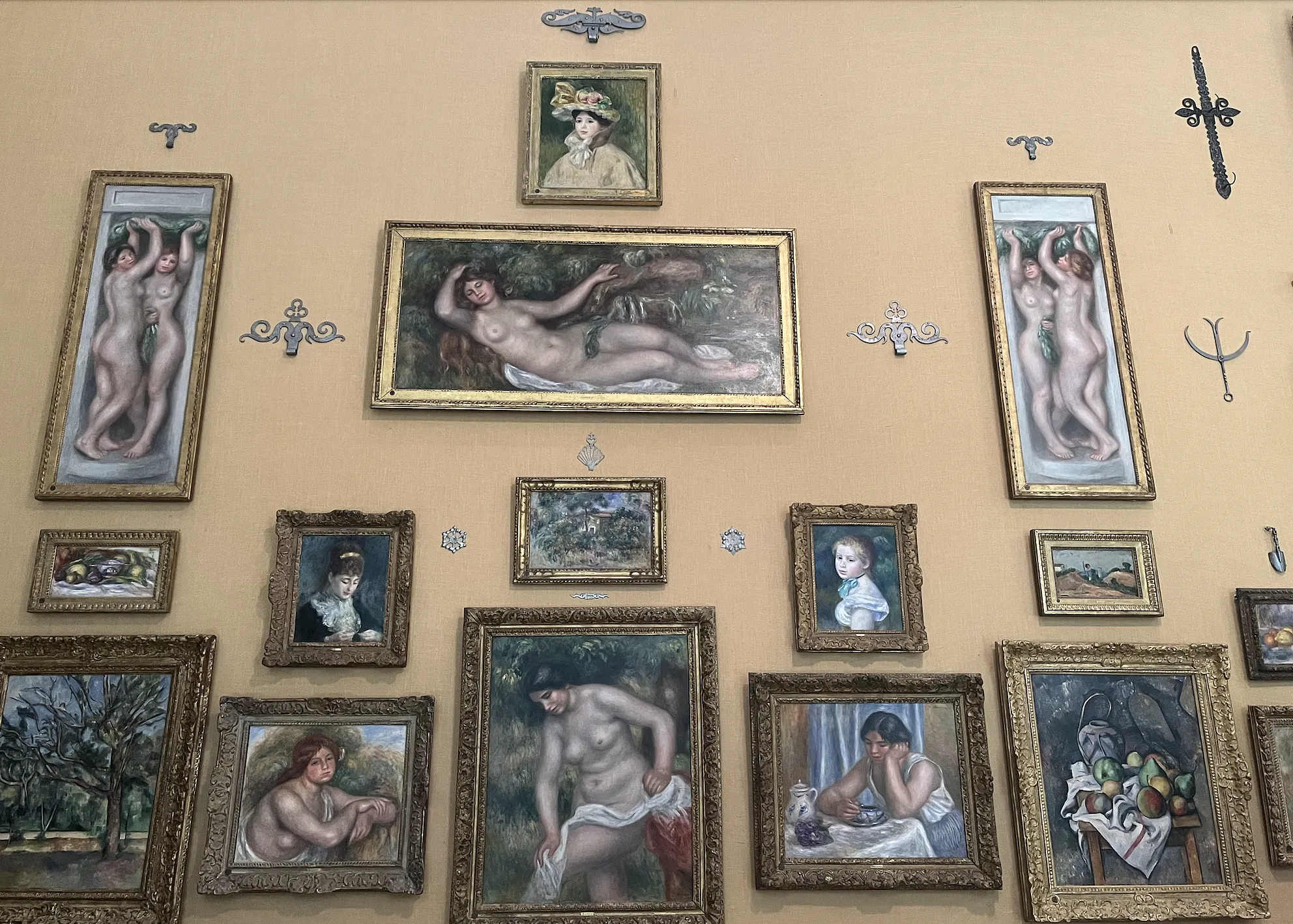
Unlike the rest of the indulgent museum — which reconstructs founder Dr. Albert Barnes’ original curatorial arrangement of his classic paintings alongside examples of iron work, sculpture, and furniture — “Visions” occupies only one so-called “classroom” inside the Barnes building.
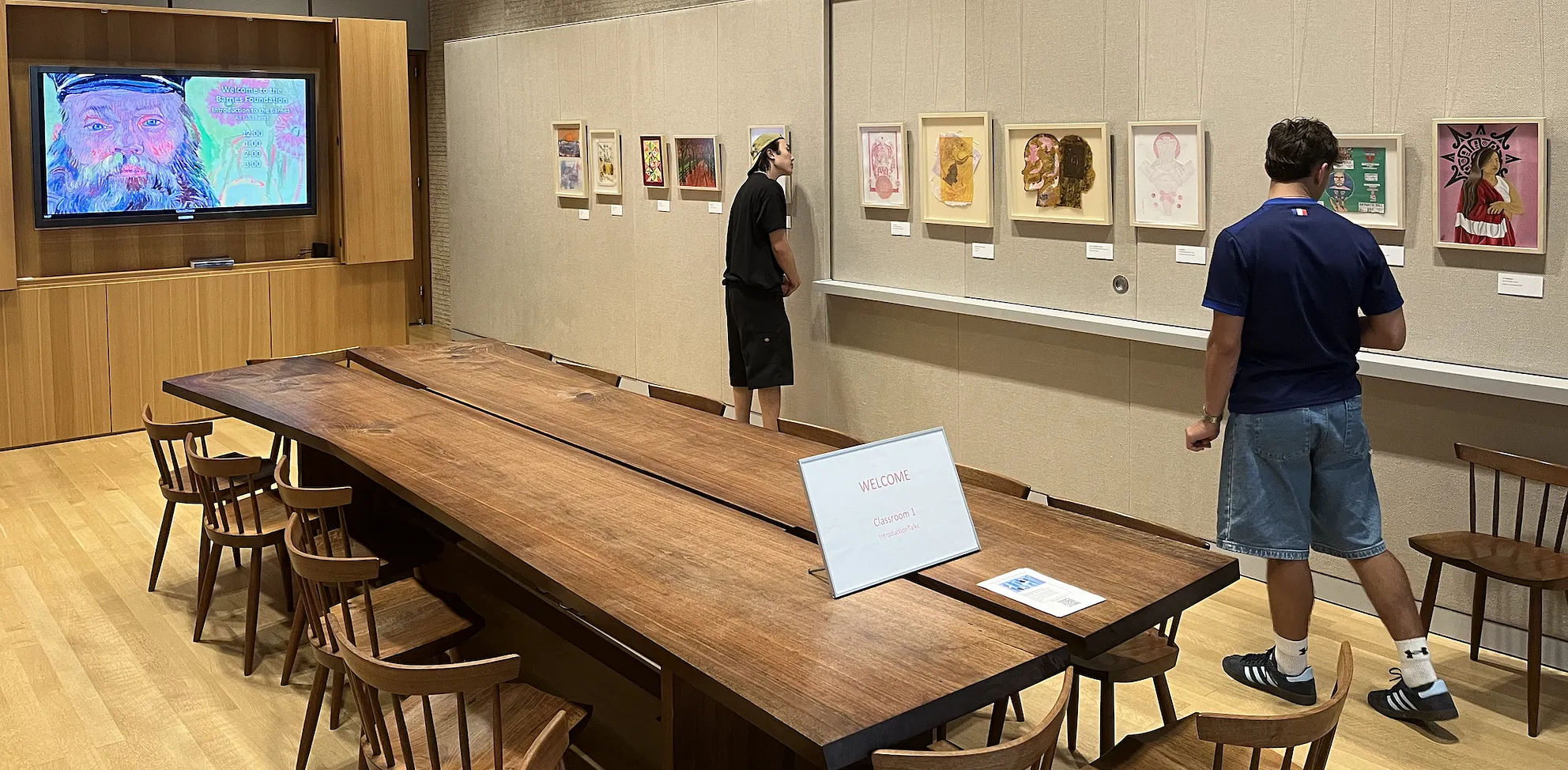
Those featured in the show include artists from the State Correctional Institute Phoenix, Southeast Pennsylvania’s maximum security prison for men, as well as individuals from Mural Arts Philadelphia’s Guild program, a paid apprenticeship program for people reentering society. Mural Arts is the common sponsor in both cases; the Philly arts organization provides supplies and creative prompts to individuals who use a designated studio in the Pennsylvania prison.
The resulting artworks are hung in a modest room hidden inside the Barnes. They range widely in mood and subject, working together as a series of meditations on confined presents and unrealized futures.

Several works play with tally marks, such as Thomas Schilk’s “Mercy Needed,” which shows blacked-out figures wrapped like mummies in white thread atop a background of crossed-off days denoted by classic, chalk-like tallies. The whole is constrained by a border of obsessive thought scribbled illegibly in red ink — a symbolically layered statement about the symbiotic relationship between physical and mental isolation.
Schilk’s mixed-media piece, hung right next to the exhibit doorway, serves as an informal introduction to the show. The string he uses to spool up his black stick figures — which in turn look like silk-stuck flies — is the thread that ties the 20-odd artworks together: It’s indicative of a kind of scrappiness born out of scarce supplies.
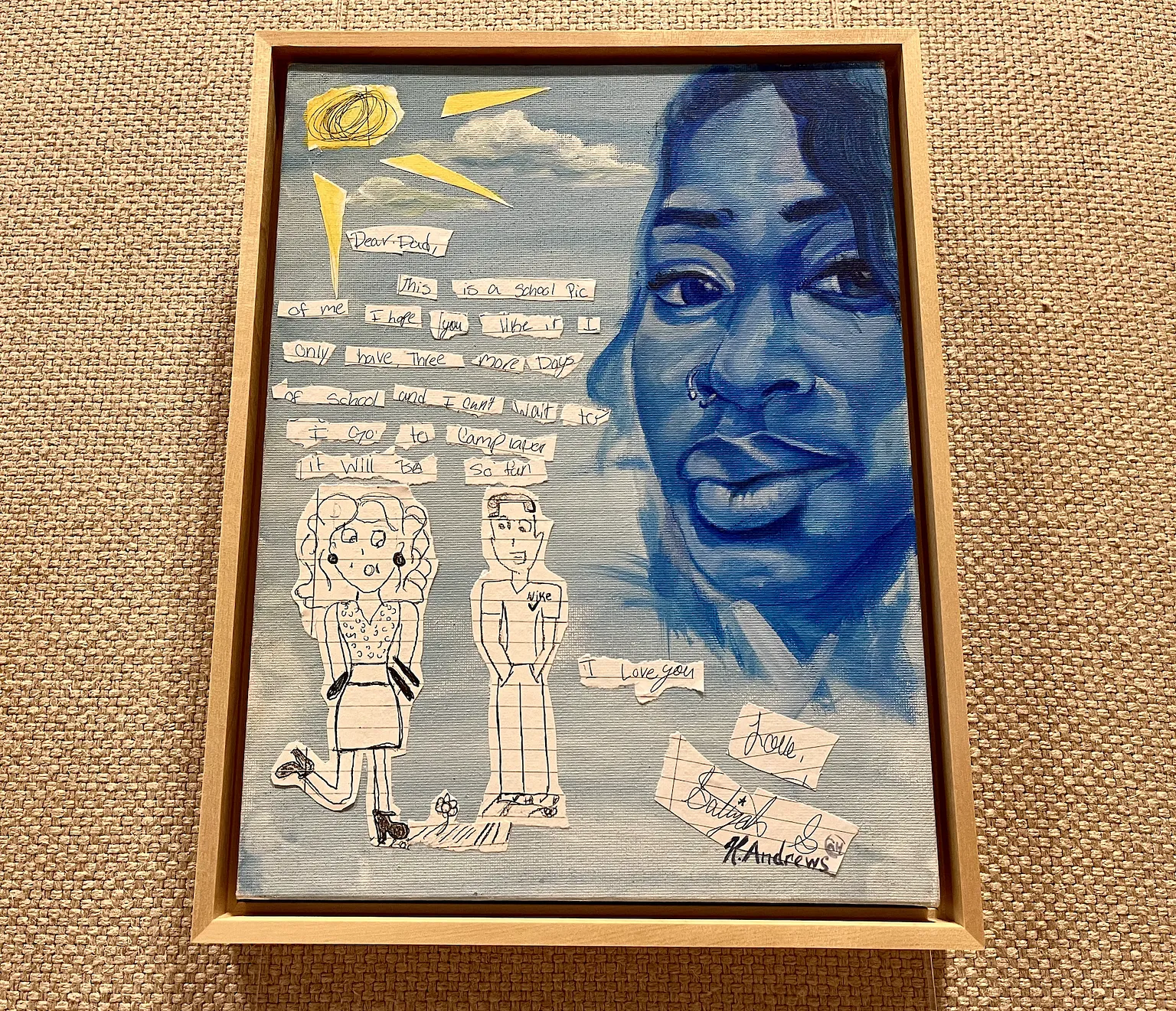
Other artworks follow a found-poetry sensibility, merging words taken from letters mailed to their cells or extracted from newspaper articles to weave distorted versions of ostensibly true stories.
One painting, for instance, includes cut-out clips from a note sent by a young daughter to her dad, contrasting the news of “three more days of school” and picture days past with a more realistic portraiture of a Black woman shown in shades of blue gazing over the scene of cut-up communications.
The image raises obvious questions: Who is the woman illustrated in the painting? Is it a depiction of the artist’s daughter all grown-up?
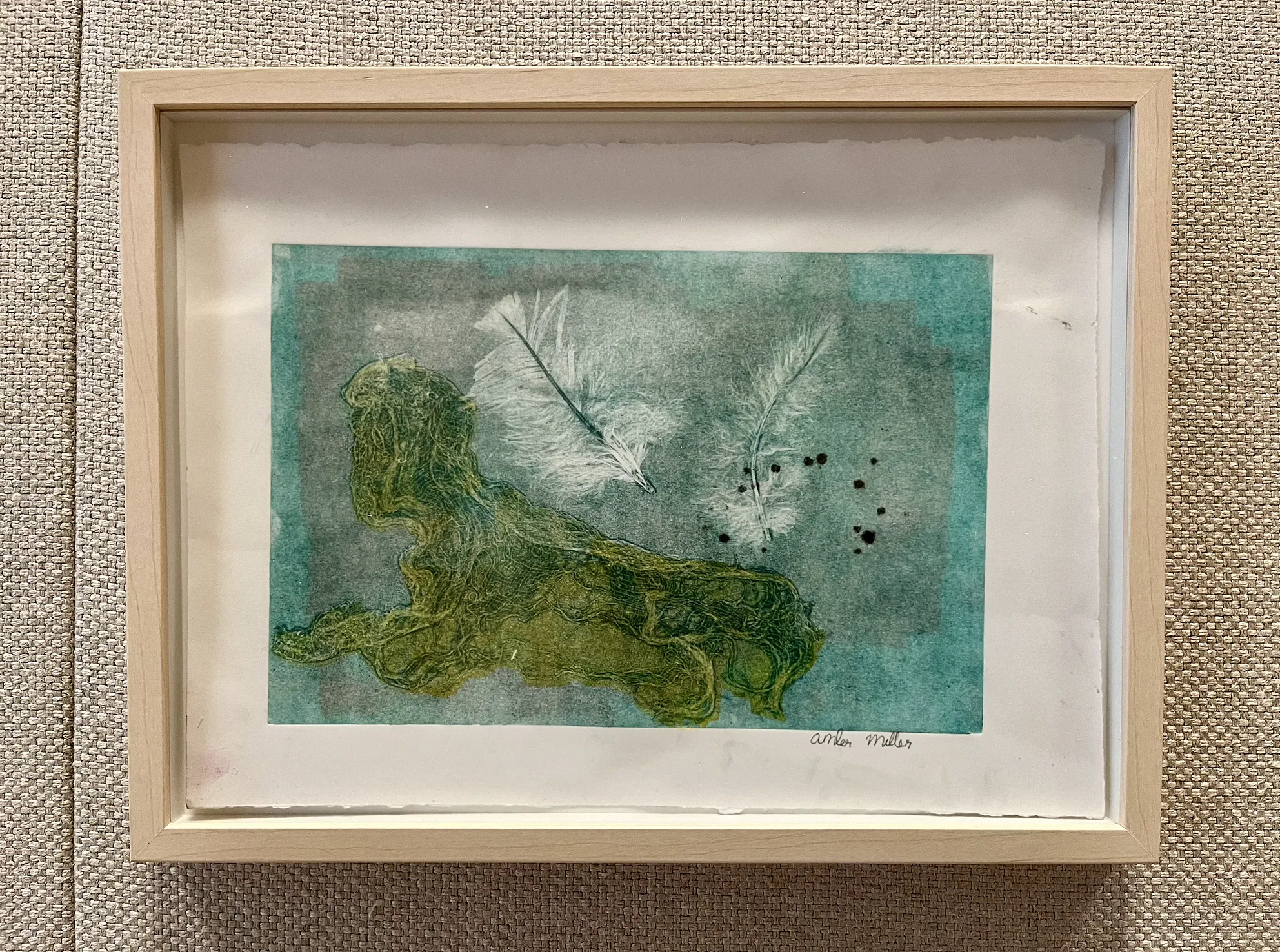
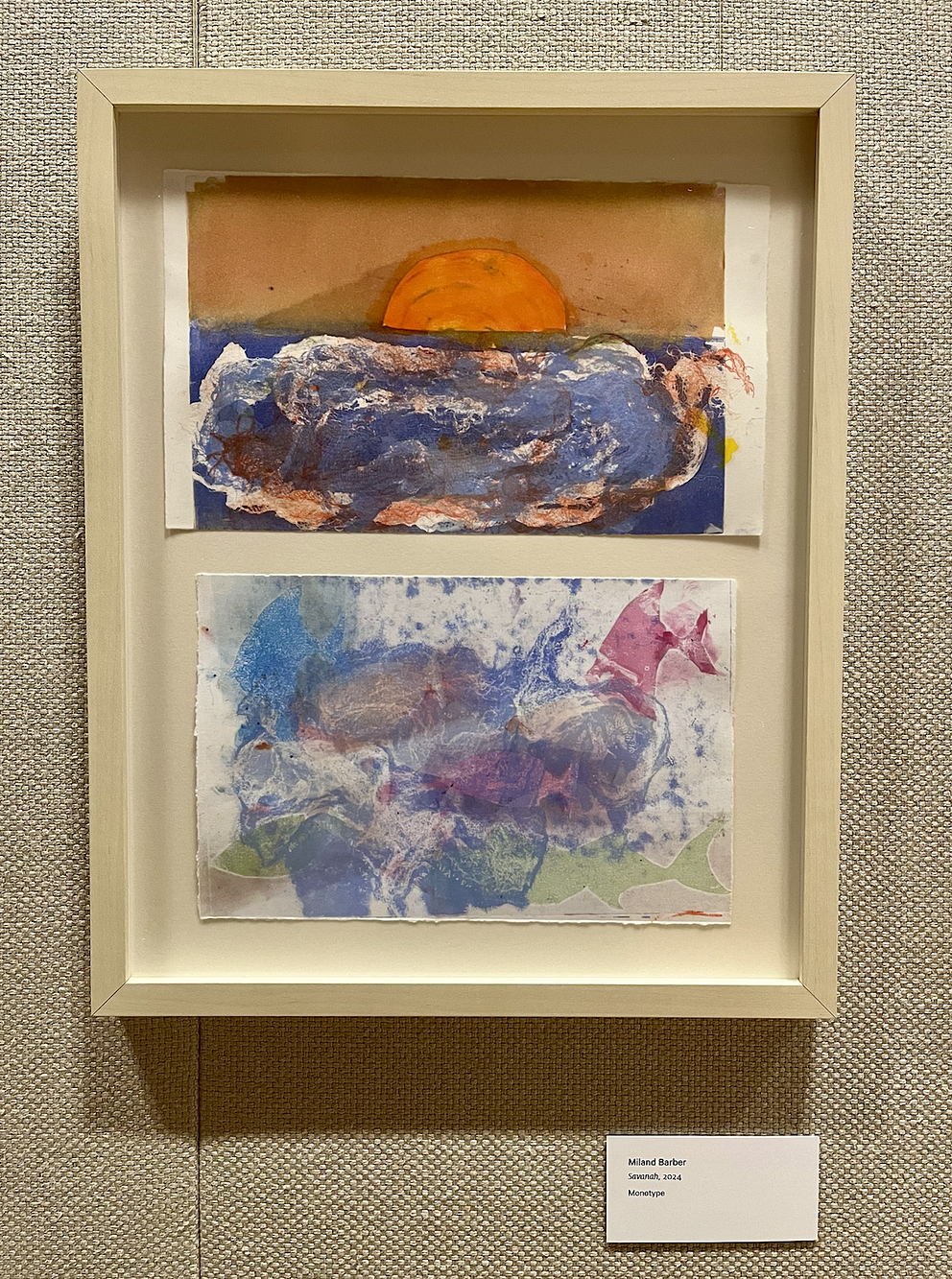
In between monotypes of sunsets and wildflowers, all imbued with meaning just given our knowledge of the creators’ state of captivity, are outstanding absences: Confusions that beg at least a wall’s worth of room per person, plus artist statements and biographies. Instead, each work lives alone as the sole representation of an artist otherwise anonymous to us; all we know is the artist’s name and the title of their work.
The pink handcuffs, for example, could easily be an exploration of color and shape with nothing to do with the evident themes of restriction and resurrection. But all I know is that the intersecting and overlapping pink and orange rounds were made by a woman named Keyanna Waters who chose to name the mixed monotype: “Simple + Hella Going On.”

The Barnes offers introductory overviews every hour for patrons eager to learn more about the history of the foundation itself. I sat in while an art historian employed by the foundation delivered a 15-minute talk highlighting how Albert Barnes forged a fortune as a chemist before deciding to open an educational institute – decidedly “not a museum” — featuring his art collection. The concept was to avoid giving any guidance or explanation regarding the art, thereby encouraging patrons to draw independent conclusions about the significance and seriousness of each artwork.
The historian told us about Barnes’ close friendship with educator reformer John Dewey, before borrowing a quote from the philosopher that pinpoints the mission of the “not” museum: “Education is not an affair of telling and being told, but an active and constructive process.”
I was left with questions about the work I was observing, the artists who had made it, and the programs that employ those artists. The institution ironically absolves the viewer from needing to know those answers by letting the art speak for itself. And many of the pieces I spotted in that room, though not framed in gold like the rest of the collection, could hold its own just as well as a Renoir or a Degas in terms of color, line, light and space.
Each work details a fragment of a story untold. But viewed all together, a holistic idea emerges: Beyond political arguments regarding abstract ideas of punishment and justice, human creativity is a renewable resource that can always be restored.

NEXT:
The Barnes Foundation is open Thursday through Monday from 11 a.m. to 5 p.m. Visions remains on display through Aug. 26, and a one-day, on-site workshop concerning art and restorative justice will take place on Wednesday, Aug. 7, between 10 a.m. and 4 p.m. Find out more here.
